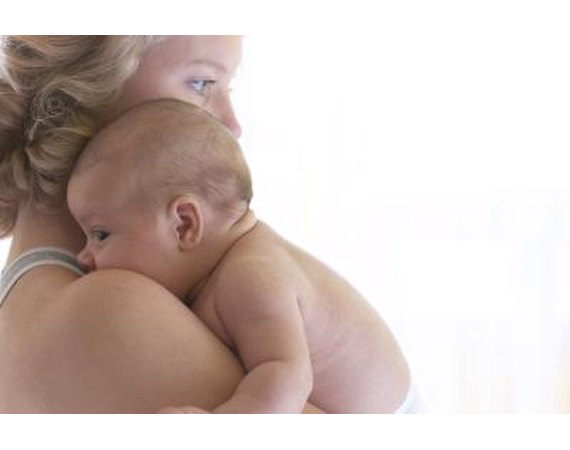
The cognitive development of an infant child is the first step in creating the foundations of learning language, memory, reasoning and thinking, according to the Centers for Disease Control and Prevention. Also, during the critical stage of an infant's life, up until one year of age, he is learning how to bond with his parents or with a caretaker. There are certain illnesses that may negatively affect the cognitive development in infants.
When a baby is a year old he should be able to display responses to easy spoken requests, hit two objects together, find pleasure in copying people, and sit up with out help, reports the Centers for Disease Control and Prevention. When an infant is not able to exhibit these behaviors by the age of one, he has a development delay. Developmental screening (observing the baby's behavior) should be performed by a doctor or nurse to assess the situation and possibly link it to a certain cause. It is important to find the source of the problem early on, and prevent it from getting worse, in cases where it can be helped.
There are several behavioral disabilities that affect a baby's ability to develop properly.
Autistic Disorder, more commonly known as autism, causes people to process information very differently than others. It may lead to problems with language development, uncommon behaviors and social issues. Autism varies in its degree of severity. One of the early signs of autism is when an infant does not react to her name after a year.
Intellectual Disability causes significant delays in a child's development, stunting her cognitive development very early in life. Down syndrome, fetal alcohol syndrome, genetic conditions and birth defects are causes for intellectual disability.
Attention-Deficit/Hyperactivity Disorder (ADHD) leads to difficulty in focusing, rash behavior and excessive activity. Brain damage, early delivery and alcohol and tobacco intake by the mother during pregnancy are some of the possible causes for ADHD.
Cerebral Palsy affects the ability to move muscles effectively. An infant under three months who has trouble managing the movement of his head when he is picked up, and legs that cross in a scissor pattern, are signs that the baby may have cerebral palsy. Brain damage or development difficulties may cause cerebral palsy.
Vision loss may occur in rare cases, from retinopathy of prematurity (ROP), the scarring of the retina. Premature babies are at high risk for ROP, states Dr. Gary Heitling in optometry. An infant with vision loss will have delays in cognitive development, because the infant won't be able to associate words with people or objects.
Hearing loss may occur temporarily from an ear infection, which causes the build-up of fluids in the ears. If an infant is not able to hear for periods of time, it will impair their ability to start understanding the beginnings of language, part of their cognitive development. Measles, meningitis (an infection of fluid close to the spinal cord and brain), and kernicterus (brain damage) may lead to hearing impairment. All these can be prevented or helped with vaccines and certain therapies.















